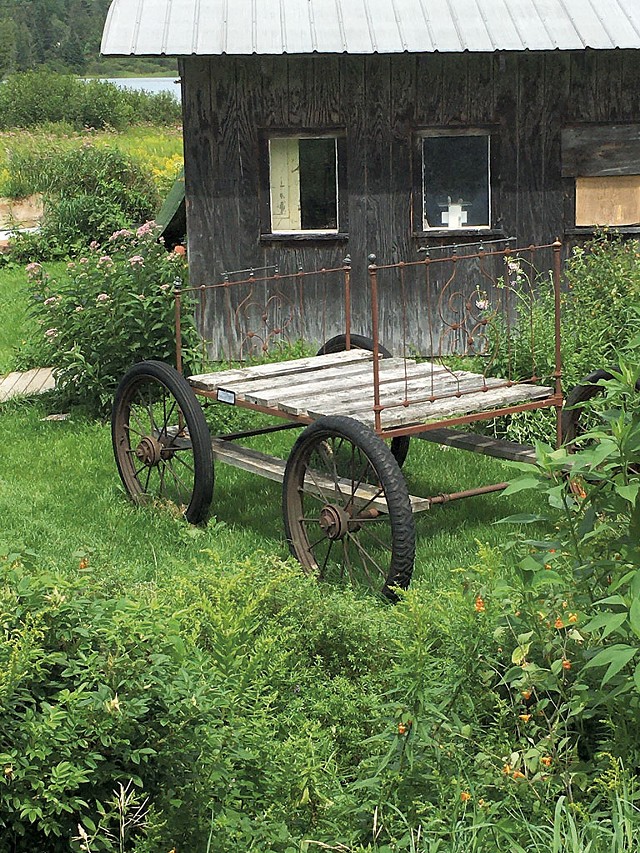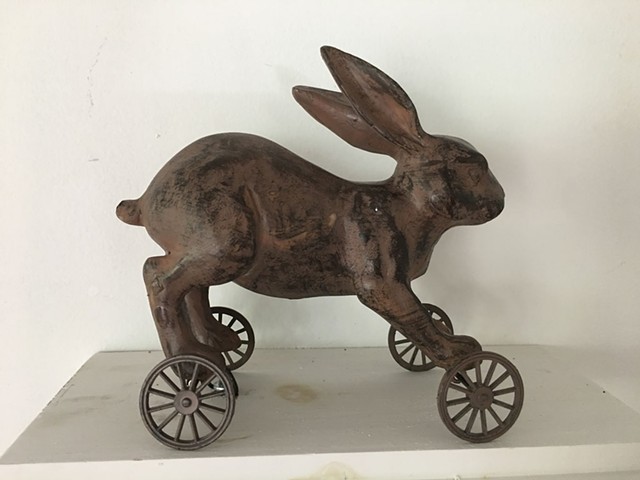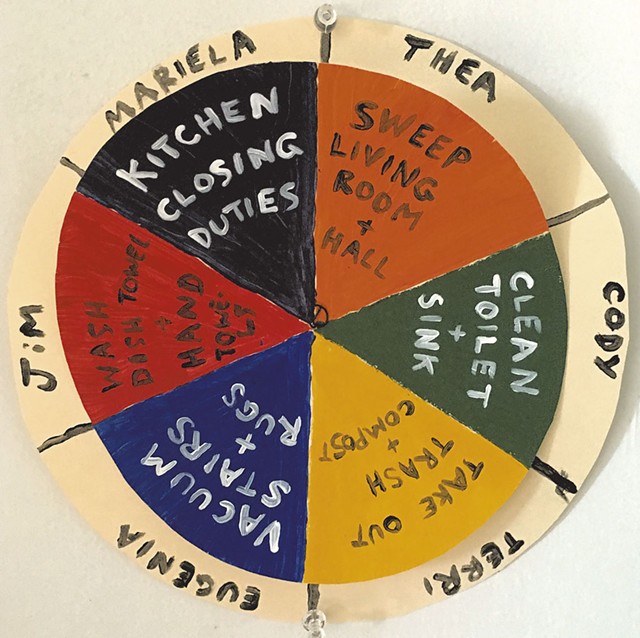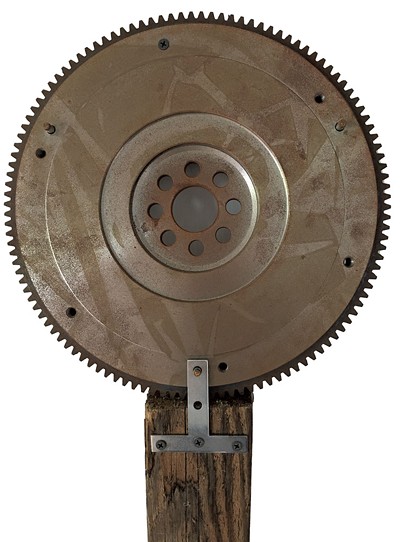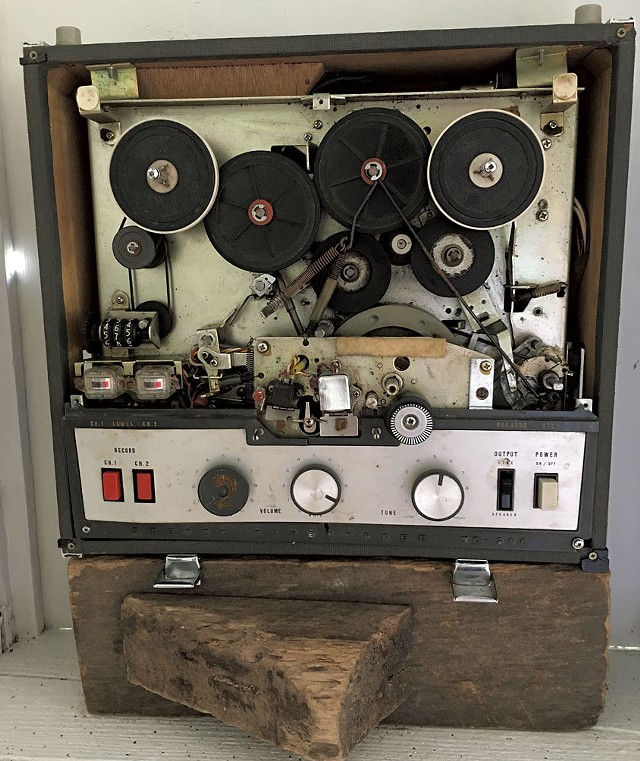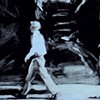Published August 23, 2023 at 10:00 a.m.
We can thank the Sumerians for inventing the wheel, or could if they still existed. Living in the 4th millennium BC on the part of the planet that now identifies as Iraq, they must have been pretty psyched in that eureka moment. It's taxing to just drag stuff around or hoist it onto an ox or whatever. Now, a world without wheels is inconceivable. Even if some of our wheel-dependent creations are complicit in the climate crisis, it's not the wheels' fault.
Point is, circular things that revolve have proven really handy — and so commonplace that we take them for granted. Enter the Museum of Everyday Life, where the quotidian is celebrated in quirky, thoughtful and fascinating annual exhibitions. You can probably guess where this is going: The newest collection of items in the Glover barn-museum is titled "What Goes Around Comes Around."
If that has a vague undertone of karmic justice, museum owner and curator Clare Dolan isn't about passing judgment. Rather, in an eloquent essay prefacing the exhibit, she extols the pragmatic, metaphorical and cosmic aspects of her subject.
"The wheel compels because it contains the profound mystery of circularity," Dolan writes. "Its elegant form suggests infinity, the state of having neither beginning nor ending."
In other words, the wheel is an object that can turn, and allow other things to turn, ad infinitum. The wheel itself has no agency; it is an enabler for vehicles, turntables, gears, roulette wheels, clocks, the TV game show "Wheel of Fortune" and so much more.
Dolan reminds us that repetition is not necessarily mindless but forward moving, allowing us to get somewhere. And it holds the potential for transformation. Yet this movement can have a flip side: Consider the turbine, which generates electricity, versus the rotating cylinders of repeating firearms, which kill.
Visitors at the Museum of Everyday Life are advised to read the text accompanying items in the exhibit, as it enhances the experience. But either way, the collection of items is bound to provoke nostalgia, amusement, curiosity and/or a visceral sense of connection to human history.
(Newcomers to the museum, take note: The big white barn houses a permanent collection of pieces from 12 previous exhibits. "What Goes Around Comes Around" is displayed in the former milking barn around back.)
In the yard outside the barn, 14 circular items are affixed to a metal frame. During a recent visit, a toddler explored their sonic qualities by hitting them with a mallet.
Sharing the green space is a toy-size windmill and a solar-powered companion spinning madly in the sun, as well as a human-size wood-and-metal wagon constructed by East Hardwick sculptor James Teuscher.
Inside, objects with wheels are arranged like sculptures on the floor, shelves and window ledges or hang on walls. Many of the metal items are antique and a bit rusty — solo wheels from long-gone implements, pulleys, a block and tackle, iron pull toys, casters. These give the exhibit the overall brownish hue of a tool shed.
Consequently, the more colorful items stand out. A red-and-white Radio Flyer tricycle gleams like new in a corner of the front room. (This reviewer reminisced about an identical one she had as a toddler.) A make-your-own pinwheel display is installed across the room. Several pastel examples dangle from the wall and poke out of a vase like flowers.
Anyone who's lived with multiple roommates can probably relate to the job wheel — a paper circle drawn as a pie chart with household chores written on each slice, and which rotates to different names each day or week. ("Vacuum stairs + rugs," Eugenia!) A hand-drawn version made the exhibit, alongside a variation called "What's Your Problem Today?" (Existential dread, worried about bugs, running out of money, etc.) These hang near a Raglan Sweater Wheel that apparently helps knitters make sleeves the same size, and a color wheel that tells what results from mixing them.
The wheel has been employed as a metaphor within world religions and mythologies. A somewhat terrifying image of samsara — the endless cycle of birth, death and rebirth — appears in a Tibetan scroll on loan from the Karmê Chöling meditation retreat in Barnet. "The wheel is held in the jaws of Yama, the personification of Death," wall text elucidates.
The scroll faces a table containing a roulette wheel and another game with colorful chips. (And what is gambling but samsara?)
Text tags at the Museum of Everyday Life are endlessly thought-provoking. Next to a set of clockworks, we learn that "the wheel does not only play a role in the consideration of time as a measurable entity. The steadily spinning wheel is also emblematic of cyclical understandings of time in societies where the Sacred is a time/space that is revisited and enacted again and again through ritual practices." Ponder this next time you glance at your digital watch.
A less esoteric lesson comes with the display of a tiny Ferris wheel and a photo of the ride's inventor, George Washington Gale Ferris. Did you know it was constructed for the 1893 Chicago World's Fair in an attempt to compete with the Eiffel Tower in Paris? Poor Ferris went bankrupt and died of typhoid fever just three years later and would never know how many people would pay good money to stand in line for his giant namesake wheel forevermore. Or that someone would foolishly declare February 14 as National Ferris Wheel Day.
It's impossible not to feel feminist pride in the text labeled "Ladies Cycle Club." When enthusiasm for riding bicycles exploded in the 1890s, it represented not just sport for women. "The bicycle became a symbol of emancipation, as it provided them with the opportunity to exercise, travel independently, and escape the confines of the household." Yay. Better yet, an African American woman in Boston named Katherine Towle Knox "became well known for her competitive racing, trick riding and bicycling costumes, and used her fame to challenge racial segregation."
You say you want a revolution? The Museum of Everyday Life makes a commendable, and highly entertaining, effort. And yet, as Dolan writes, "attempting to represent all aspects of the wheel is an impossible task, so enormous is its scope and reach into every aspect of life. We can only circle around and around the subject."
"What Goes Around Comes Around" is on view through July 2024. museumofeverydaylife.org
The original print version of this article was headlined "Circular Thinking | "What Goes Around Comes Around" at the Museum of Everyday Life considers revolutions"
More By This Author
Speaking of Glover, The Museum Of Everyday Life
-

Totally Transfixed: A Rare Eclipse on a Bluebird Day Dazzled Crowds in Northern Vermont
Apr 10, 2024 -

Inside Bread and Puppet Theater as Founder Peter Schumann, 89, Contemplates His Final Act
Aug 30, 2023 -

Best museum
Aug 2, 2023 -

Bread and Puppet Theater Expands With the Purchase of Glover Land
Jan 11, 2023 -

'Coming Clean,' at the Museum of Everyday Life, Shows Us How and Why We Bathe
Jun 15, 2022 - More »
Comments
Comments are closed.
From 2014-2020, Seven Days allowed readers to comment on all stories posted on our website. While we've appreciated the suggestions and insights, right now Seven Days is prioritizing our core mission — producing high-quality, responsible local journalism — over moderating online debates between readers.
To criticize, correct or praise our reporting, please send us a letter to the editor or send us a tip. We’ll check it out and report the results.
Online comments may return when we have better tech tools for managing them. Thanks for reading.



































